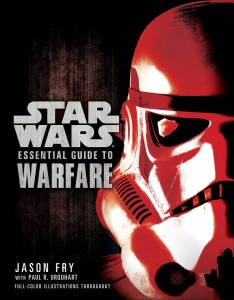 Jason Fry is back with another set of endnotes from Essential Guide to Warfare. This set kicks off by addressing the size of the Emprie’s fleet used to defend the second Death Star at Endor:
Jason Fry is back with another set of endnotes from Essential Guide to Warfare. This set kicks off by addressing the size of the Emprie’s fleet used to defend the second Death Star at Endor:
Showdown in the Outer Rim: The makeup of the Imperial forces we see at the Battle of Endor in Return of the Jedi is one of the strongest arguments for the so-called minimalist point of view, discussed earlier in these endnotes. As far as the Galactic Civil War is concerned, Endor is the whole shooting match: Sidious has woven a trap meant to simultaneously destroy the Rebellion and turn the Jedi’s last hope into the Sith’s ultimate triumph. So why does Palpatine use only the Executor and a relatively paltry task force to pin the Rebels at Endor?
It’s a good question. Unless you want to wish away the entire EU (which you’re free to do, though please remember your humble author was not), it’s clear that the Empire has lots of Executor-class dreadnoughts, some number of battlecruisers and thousands and thousands of Imperial Star Destroyers. So why are the still-vulnerable Death Star II and the Emperor so poorly guarded?
Late in the writing of Warfare, I decided that question deserved an answer that would fit within the philosophical framework I’d worked out for the book. So here it is: Palpatine had two massive invasion fleets elsewhere, waiting for his signal to ravage Mon Calamari Space and Chandrila. And of course plenty of warships were needed to keep rebellious worlds pacified, guard the frontier against external menaces Sidious had known about for decades, and so forth. Throw in a bit of the usual mustache-twisting overconfidence that every villain’s master plan needs and I think the explanation seems plausible.
Fleet junkies will also enjoy a look at Mon Cal cruisers in this update as well as a look at the greatest military mind ever to emerge from that planet, Admiral Ackbar. Fry also takes some time to talk about the section of the book covering warfare with the most adorable little ravenous, bloodthirsty warriors.
To read the rest, visit Jason Fry’s Tumblr.

